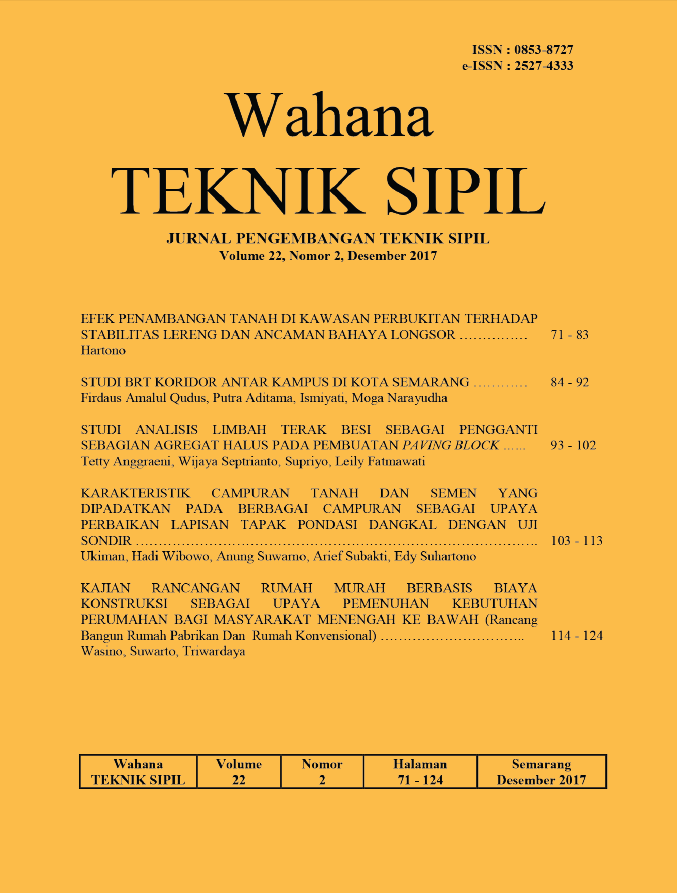Karakteristik Campuran Tanah Dan Semen Yang Dipadatkan Pada Berbagai Campuran Sebagai Upaya Perbaikan Lapisan Tapak Pondasi Dangkal Dengan Uji Sondir
DOI:
https://doi.org/10.32497/wahanats.v22i2.1167Abstract
In the effort of public welfare, the government through the provision of boards such as residential houses, either through private parties or SOEs, often gets the location of the land base in the form of soft land or ugly carrying capacity, which impact on maintenance and repair costs far greater than the cost of purchase. Researchers studied through the stabilization of soil with cement materials and soil mixed variations that occur, so that the soil as a buffer building is known strength or carrying capacity. On improving the strength of the road body with soil stabilization through the CBR test, it can be obtained an increase in soil bearing capacity. Sondir testing for the foundation design data either through conical resistance (qc) or by friction can be obtained by the base area of the foundation foot. If the value of qc is large then the footprint of the foundation foundation, especially shallow foundations will be small. With soil and cement stabilization studies in the laboratory, with different variations and durations can be obtained a reference to the increase in the carrying capacity of the shallow foundation footing and the required thickness of the layer based on the pattern of voltage distribution with the mathematical equation y = 0.7935x - 6.79 where y = power support for soil (kg / cm2), and x =% plus cement and R = correlation.
Kata kunci: Tanah, Semen, Daya Dukung, Sondir.
Downloads
Published
Issue
Section
License
Authors who publish with this journal agree to the following terms:Authors retain copyright and grant the journal right of first publication with the work simultaneously licensed under a Creative Commons Attribution License that allows others to share the work with an acknowledgement of the work's authorship and initial publication in this journal.
Authors are able to enter into separate, additional contractual arrangements for the non-exclusive distribution of the journal's published version of the work (e.g., post it to an institutional repository or publish it in a book), with an acknowledgement of its initial publication in this journal.
Authors are permitted and encouraged to post their work online (e.g., in institutional repositories or on their website) prior to and during the submission process, as it can lead to productive exchanges, as well as earlier and greater citation of published work (See The Effect of Open Access).






